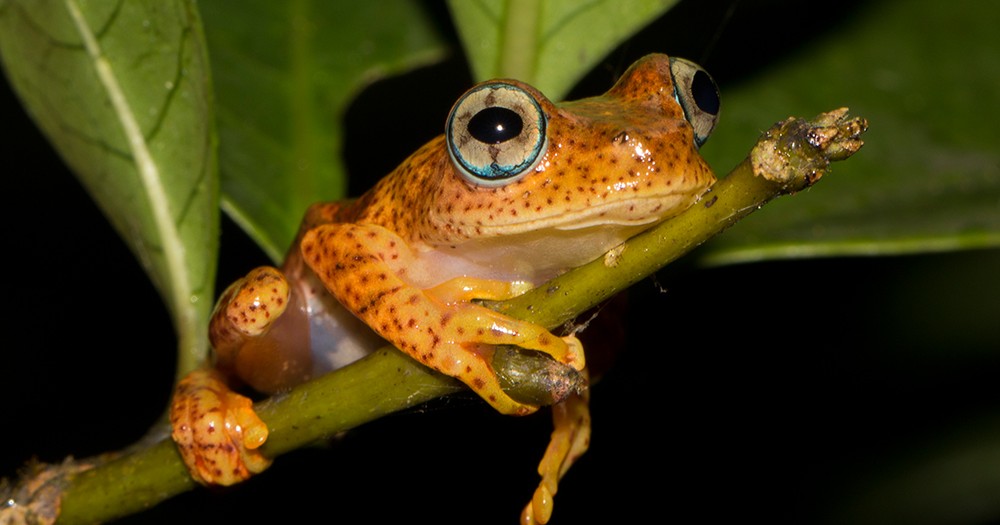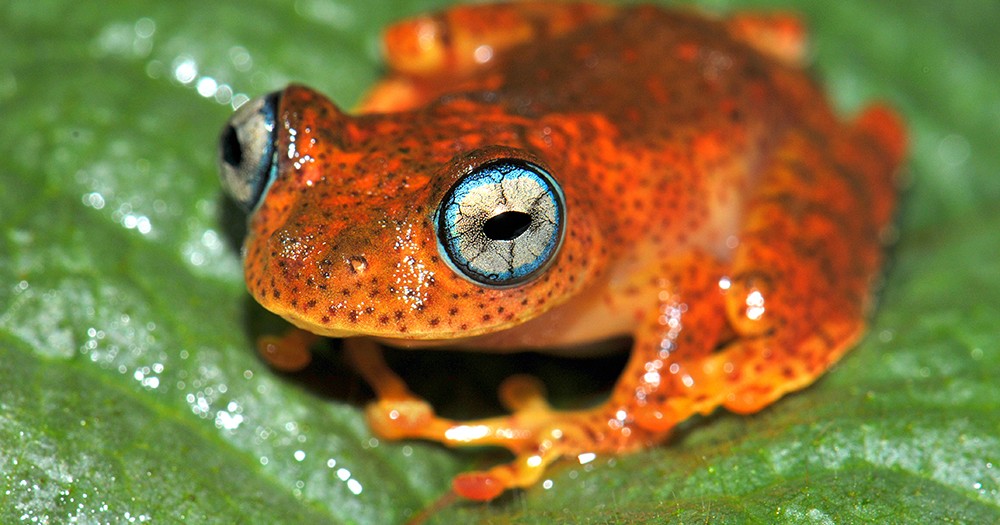Madagascar’s dense, mystical rainforests offer a home to countless endemic (i.e. only here occurring) animals. Among them is a particularly colorful representative of the Madagascar frogs, a frog with the scientific name Boophis pyrrhus (from Greek pyrrhos = fire red). It can be found on the east coast and in the southern highlands of Madagascar, from Soanierana Ivongo near the island of Nosy Boraha (St. Marie) via the Andasibe-Mantadia National Park down to the Ranomafana National Park. The fiery red frog is quite adaptable, but always needs flowing waters in its vicinity for spawning and prefers damp, dense forests at 450 to 915 m height. Whether it is a primary rainforest or destroyed areas with secondary vegetation is of secondary importance.

The pretty frog was found as early as the middle of the 20th century, but was only described by zoologists Glaw, Vences, Andreone and Vallan in 2001. Despite its small size of just two to three centimetres, the small amphib stands out in terms of colour: its basic colour is yellow-orange with countless red dots. The fire frog is also easily recognizable by an hourglass-shaped dark badge on its back. The iris is sky-blue with a silver-white outer ring, in females the colours can be a little less splendid with grey and black. The legs are brown banded, the flanks white. Externally, many Madagascar frogs resemble the South American poison dart frogs, and in fact they secrete toxic skin secretions similar to their distant relatives, protecting them from predators. However, the colorful fire frogs are not dangerous for humans. One could think that the beautiful colours of the frog are responsible for its name. In fact, the fire frog was named this way because dead specimens of this species turn even brighter red when stored in conserving alcohol in museums.
From November to April, i.e. in the rainy season, the male frogs courtship and call out loudly for the female fire frogs. They sit at a height of one to two meters along streams and rivers. On the basis of the reputation one can assign each frog of its kind: The calls of the fiery red frog consist of 12 to 17 short tones, which at first sound a little chaotic, but towards the end of each call seem more harmonious.

During mating, the male climbs over the female, but does not fall into the amplexus typical of many frogs (a clamp reflex). He leaves his sperm on her back, from where it runs into the cesspool and fertilizes the eggs of the female. This form of fertilization is a special feature of Madagascar frogs and, like so much else in Madagascar, is unique in the animal world. After mating, the females lay their spawn in plants, where later the brown-black spotted tadpoles hatch. The tadpoles move with meandering movements to the water, where they carry out their transformation to the finished frog.
Unlike most animals in Madagascar, the fiery red frog is classified as a “least concern”on the IUCN red list. Although its habitat is endangered by slash-and-burn, logging and grazing with zebus, this frog can also cope with severely destroyed habitats and is not dependent on special, very unusual biotopes. In order to better understand the special features of Boophis pyrrhus and to preserve the stock permanently, the communally operated species protection project Mitsinjo in Andasibe has been rebreeding the species since 2011.
 MADAMAGAZINE Your Magazine about Madagascar
MADAMAGAZINE Your Magazine about Madagascar










